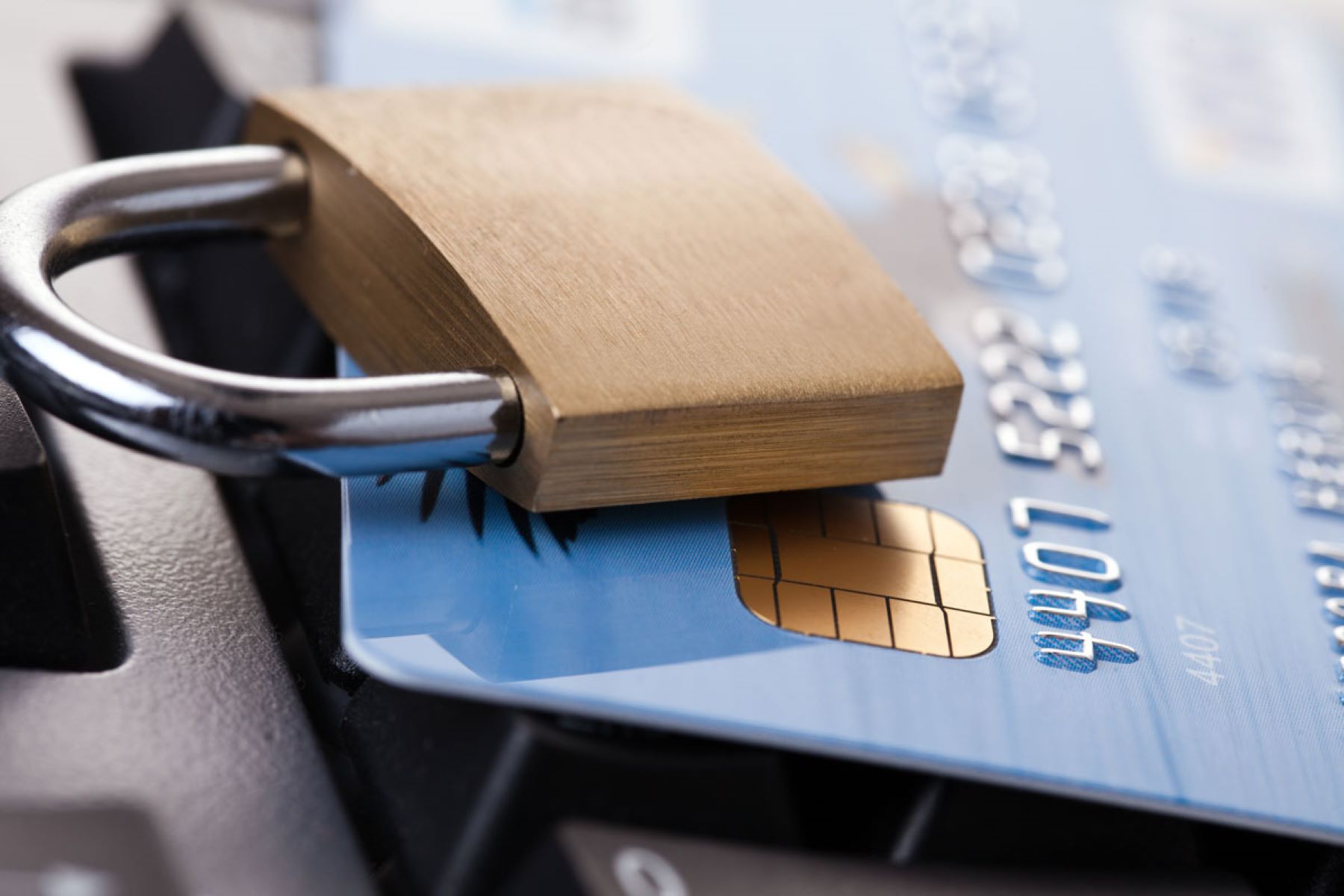

Finance
How To Store Credit Card Information
Modified: January 15, 2024
Learn how to safely store credit card information for better financial management. Secure your finances by following these expert tips and avoid any potential risks.
(Many of the links in this article redirect to a specific reviewed product. Your purchase of these products through affiliate links helps to generate commission for LiveWell, at no extra cost. Learn more)
Table of Contents
Introduction
In today’s digital age, online purchases have become the norm, with credit cards being the most widely used payment method. As a result, businesses and individuals often find themselves needing to store credit card information for seamless transactions and convenient repeat purchases. However, storing this sensitive financial data carries significant legal and security considerations.
While there are legitimate reasons for businesses to store credit card information, such as subscription services or e-commerce platforms, it is crucial to implement secure storage methods and adhere to industry standards. This article will explore best practices for storing credit card information, encryption and tokenization methods, PCI DSS compliance, data breach prevention, and choosing a secure payment gateway.
By understanding these aspects, businesses can ensure the safety of their customers’ credit card information, build trust, and maintain compliance with regulatory requirements. Individuals, too, must be aware of the risks associated with storing credit card information and take necessary precautions to safeguard their financial well-being.
Let us delve into the world of credit card data storage and explore the best ways to keep this information secure.
Why Store Credit Card Information
Storing credit card information can offer numerous benefits to businesses and individuals alike. Understanding the reasons behind storing this data can help shed light on the importance of implementing secure storage practices.
For businesses, storing credit card information enables seamless and convenient transactions for customers. With stored card details, customers can easily make repeat purchases without having to re-enter their information every time. This simplifies the checkout process, reducing friction and improving the overall shopping experience.
In addition, storing credit card information allows businesses to facilitate subscription-based services. With the customer’s permission, recurring charges can be made automatically, ensuring uninterrupted access to products or services. This is particularly advantageous for businesses in sectors like online streaming, software as a service (SaaS), and membership-based organizations.
Moreover, storing credit card information can aid in fraud detection and prevention. By retaining this data, businesses can compare transactions against known patterns and identify suspicious activity. This enables early detection of potential fraudulent transactions, reducing the risk of financial loss for both the business and the customer.
For individuals, storing credit card information can save time and effort during online shopping. With stored card details, users can complete purchases quickly without the need to manually enter their information repeatedly. This can be especially helpful for those who frequently shop online or make regular payments.
Furthermore, storing credit card information can provide a layer of financial backup. Having the option to store multiple credit cards allows individuals to securely save alternative payment methods. In case of a lost or expired card, having stored information ensures that payment can still be made without delay or inconvenience.
However, it is important to note that storing credit card information carries certain legal and security considerations. Businesses and individuals must understand the risks involved and take appropriate measures to protect this sensitive financial data, safeguarding the privacy and security of both parties.
Legal and Security Considerations
Storing credit card information comes with significant legal and security responsibilities. It is vital to comply with applicable laws and regulations to protect the privacy and security of sensitive financial data. Here are some key considerations:
- Payment Card Industry Data Security Standard (PCI DSS) Compliance: PCI DSS is a set of security standards established by major credit card companies to ensure the protection of cardholder data. Compliance with these standards is mandatory for any entity that stores, processes, or transmits credit card information. It includes implementing robust security measures, conducting regular vulnerability assessments, and adhering to strict data protection protocols.
- Legislation and Data Protection Laws: Businesses must comply with applicable data protection laws, such as the EU’s General Data Protection Regulation (GDPR) or the California Consumer Privacy Act (CCPA). These laws outline the requirements for the collection, storage, and handling of personal data, including credit card information. Non-compliance can result in severe financial and reputational consequences.
- Encryption and Secure Storage: Credit card information should be stored using strong encryption methods. Utilizing encryption algorithms ensures that the data is unreadable if unauthorized access occurs. Additionally, businesses should employ secure storage practices, such as using firewalls, access controls, and regular data backups.
- Security Audits and Compliance Assessments: Regular security audits and compliance assessments should be conducted to identify and address potential vulnerabilities in the storage and handling of credit card information. This helps ensure that security measures are up to date and effective in safeguarding sensitive data.
- Consent and Transparent Disclosure: Businesses should obtain explicit consent from customers before storing their credit card information. It is essential to clearly disclose how the data will be used, stored, and protected. Providing customers with transparent information helps build trust and ensures they are aware of their rights regarding their personal financial data.
By understanding and adhering to these legal and security considerations, businesses can protect themselves and their customers from potential breaches, financial losses, and legal consequences. It is crucial to prioritize the privacy and security of credit card information throughout every stage of the data storage process.
Best Practices for Storing Credit Card Information
Storing credit card information requires careful attention to security protocols to safeguard sensitive financial data. By implementing best practices, businesses can minimize the risk of data breaches and protect both their customers and their reputation. Here are some key practices to consider:
- Implement Strong Access Controls: Limit access to credit card information to only authorized personnel who genuinely need it. Use role-based access controls and unique user credentials to track and control data access.
- Employ Tokenization or Encryption: Encrypting credit card information ensures that it remains secure even if an unauthorized individual gains access to the data. Alternatively, tokenization can be used, where a unique token is generated to represent the card details. The actual card information is stored securely off-site.
- Regularly Update and Patch Systems: Keep all software and systems up to date with the latest security patches. Regularly review and update security protocols to address any vulnerabilities that may arise.
- Implement Segmentation and Isolation: Segregate systems handling credit card information from other parts of the network. This helps contain potential breaches and minimizes the impact on other systems in the event of an attack.
- Monitor and Analyze Logs: Regularly review system logs for any suspicious activities or unauthorized access attempts. Analyzing logs can help identify potential security threats and take immediate action to mitigate them.
- Retain Minimum Necessary Data: Only store the essential information required for transactions. Avoid storing unnecessary data, such as the CVV code, to minimize the risk of unauthorized use of the card.
- Regularly Train Employees: Provide ongoing training to employees on data security best practices, including awareness of phishing scams and social engineering techniques. Educated employees are a vital line of defense against potential security breaches.
- Adhere to PCI DSS Compliance: Follow the guidelines set forth by the Payment Card Industry Data Security Standard (PCI DSS). Complying with these standards ensures that proper security measures are in place to protect credit card data.
By implementing these best practices, businesses can significantly reduce the risks associated with storing credit card information. It is essential to prioritize data security and regularly assess the effectiveness of the measures in place to ensure continuous protection of sensitive financial data.
Encryption and Tokenization Methods
Encryption and tokenization are two key methods used to secure credit card information during storage. By employing these techniques, businesses can protect sensitive financial data from unauthorized access and reduce the risk of data breaches. Let’s explore encryption and tokenization in more detail:
Encryption: Encryption involves encoding credit card information in such a way that it becomes unreadable to unauthorized individuals. This is achieved through algorithms that scramble the data into a ciphertext. Only authorized parties with the decryption key can revert the ciphertext back to its original form, making it an essential safeguard against data breaches. Encryption can be applied to data at rest (stored data), data in transit (data being transmitted between systems), or both.
Common encryption methods used for credit card information storage include:
- Advanced Encryption Standard (AES): AES is a symmetric encryption algorithm widely used for securing sensitive data, including credit card information. It provides a high level of security and is recognized as a standard encryption algorithm.
- Transport Layer Security (TLS): TLS is a cryptographic protocol used to secure data in transit. It establishes an encrypted connection between a client and a server, ensuring that credit card information transmitted over the network remains confidential.
Tokenization: Tokenization is a process where sensitive data, such as credit card information, is replaced with a randomly generated token. The actual card details are stored securely off-site in a tokenization system, while the token is used for transactional purposes. This helps minimize the risk of exposing the sensitive data in the event of a system breach.
Tokenization offers several advantages:
- Reduced scope of compliance: By replacing cardholder data with tokens, businesses can reduce the scope of PCI DSS compliance assessments since sensitive data is no longer stored within their systems.
- Improved security: Tokens are useless to attackers even if they gain unauthorized access to the systems. The tokenization system acts as a secure vault, ensuring that the original card information remains protected.
- Efficient payment processes: Tokenization simplifies the payment process as the token can be used for subsequent transactions with the customer’s consent, eliminating the need to store and retrieve sensitive card information.
Both encryption and tokenization are valuable methods for protecting credit card information during storage. It is crucial for businesses to assess their specific needs and implement the appropriate combination of encryption and tokenization methods to ensure the highest level of data security.
PCI DSS Compliance
The Payment Card Industry Data Security Standard (PCI DSS) is a set of security standards established by major credit card companies, including Visa, Mastercard, American Express, and Discover. It aims to ensure the protection of cardholder data and maintain the integrity and security of credit card transactions. Compliance with PCI DSS is mandatory for any entity that stores, processes, or transmits credit card information. Let’s explore the key aspects of PCI DSS compliance:
Scope: PCI DSS compliance applies to all organizations that handle credit card data, including merchants, service providers, and financial institutions. It covers both online and offline transactions.
Requirements: The PCI DSS framework consists of 12 high-level requirements, each with multiple sub-requirements. These requirements include installing and maintaining firewalls, implementing strong access controls, encrypting transmission of cardholder data, regularly monitoring and testing networks, and maintaining a vulnerability management program, among others.
Self-Assessment Questionnaire (SAQ): The SAQ is a validation tool provided by the PCI Security Standards Council. It helps organizations assess their compliance status based on their business model and the specific requirements that apply to them. There are different SAQ types designed for different types of businesses.
Security Assessments: As part of PCI DSS compliance, organizations must undergo regular security assessments, which can include internal and external vulnerability scans, penetration testing, and network segmentation testing. These assessments help identify any vulnerabilities or weaknesses in the security infrastructure and ensure they are addressed promptly.
Compliance Validation: Organizations that store credit card information must validate their compliance with PCI DSS through various means. This can include self-assessment questionnaires, on-site audits conducted by Qualified Security Assessors (QSAs), or network scans conducted by Approved Scanning Vendors (ASVs).
Consequences of Non-Compliance: Non-compliance with PCI DSS can have severe consequences for businesses. It can lead to financial penalties, increased transaction fees, loss of customer trust, legal liabilities, and reputational damage. Additionally, in the event of a data breach, organizations that are not PCI DSS compliant may face increased liability and may not be eligible for breach assistance programs provided by card companies.
Ensuring PCI DSS compliance is critical for organizations processing credit card transactions. By adhering to these standards, businesses can demonstrate their commitment to securing cardholder data, protect against potential data breaches, and establish trust and confidence among their customers.
Data Breach Response and Prevention
Data breaches can have severe consequences for businesses storing credit card information, including financial loss, reputational damage, and legal liabilities. It is crucial for organizations to have a robust data breach response plan in place and implement preventive measures to minimize the risk of data breaches. Let’s explore the key aspects of data breach response and prevention:
Data Breach Response Plan:
- Identify and Assess: Immediately identify and assess the breach to determine the nature and extent of the incident. Engage with internal IT teams, legal counsel, and any relevant authorities or regulators.
- Containment and Mitigation: Take immediate action to contain and mitigate the breach. This may involve isolating affected systems, shutting down unauthorized access points, and applying patches or fixes to vulnerabilities.
- Notification: Notify affected individuals, regulatory authorities, and credit card associations as required by applicable laws and regulations. Prompt and transparent communication is essential to maintain trust and facilitate necessary steps for affected individuals to protect themselves.
- Investigation: Conduct a thorough investigation to determine the cause of the breach, the impact on sensitive data, and the potential vulnerabilities that led to the incident. Engage with cybersecurity experts if necessary.
- Remediation: Implement necessary measures to address the vulnerabilities identified during the investigation. This may include strengthening security controls, enhancing employee training, and updating policies and procedures.
- Learn and Improve: Use the lessons learned from the breach to enhance security practices and protocols. Regularly review and update security measures to stay ahead of evolving threats.
Data Breach Prevention:
- Implement Strong Security Measures: Utilize firewalls, data encryption, secure storage practices, and access controls to protect credit card information from unauthorized access.
- Regularly Update Systems: Keep all software, systems, and security patches up to date to address vulnerabilities and protect against known risks.
- Employee Training: Provide ongoing training to employees on data security best practices, including awareness of social engineering, phishing attacks, and the importance of strong passwords.
- Monitor and Assess: Continuously monitor network activity, conduct regular security audits, and perform vulnerability assessments to identify and address potential weaknesses.
- Third-Party Vendors: Ensure that any third-party vendors or service providers handling credit card data also have robust security measures in place and comply with relevant standards.
- Data Retention: Minimize the amount of stored credit card data to reduce the impact of a potential breach. Retain only the necessary information required for transactions.
By having a comprehensive data breach response plan and implementing preventive measures, businesses can minimize the risk of data breaches and protect the sensitive credit card information of their customers. Prioritizing data security and taking proactive steps to prevent breaches are essential for maintaining trust, preserving reputation, and safeguarding against financial and legal consequences.
Choosing a Secure Payment Gateway
When it comes to storing credit card information, choosing a secure payment gateway is of utmost importance. A payment gateway is the technology that facilitates the transfer of credit card information securely between the merchant and the payment processor. Here are some key considerations to keep in mind when selecting a secure payment gateway:
- PCI DSS Compliance: Ensure that the payment gateway is fully compliant with the Payment Card Industry Data Security Standard (PCI DSS). This ensures that the gateway provider has implemented robust security measures to protect credit card data.
- Encryption and Data Security: Look for a payment gateway that utilizes strong encryption methods to protect sensitive data during transmission and storage. Ideally, the gateway should use industry-standard encryption algorithms to ensure the highest level of data security.
- Tokenization: Consider whether the payment gateway offers tokenization as an added layer of security. Tokenization replaces sensitive card details with unique tokens, reducing the risk of exposing actual card information during transactions.
- Secure Network Infrastructure: Ensure that the payment gateway provider has implemented robust network security measures, including firewalls, intrusion detection systems, and regularly updated security protocols. A secure network infrastructure reduces the risk of unauthorized access and data breaches.
- Industry Reputation: Choose a payment gateway provider with a strong reputation and a track record of securely processing credit card transactions. Conduct thorough research, read reviews, and consider recommendations from trusted sources to ensure the provider’s reliability and security practices.
- Fraud Prevention Measures: Inquire about the fraud prevention measures employed by the payment gateway. Look for features such as address verification system (AVS), card security codes, and additional fraud detection tools to help minimize the risk of fraudulent transactions.
- Integration and User Experience: Consider the ease of integration with your existing systems and the overall user experience for both your customers and your team. A seamless integration process and a user-friendly interface contribute to a smooth payment experience for your customers.
- Customer Support: Evaluate the level of customer support provided by the payment gateway provider. Prompt and knowledgeable support can be crucial in addressing any technical issues or concerns that may arise during payment processing.
By carefully considering these factors, businesses can choose a secure payment gateway that meets their specific needs and ensures the protection of credit card information. Prioritizing data security, PCI DSS compliance, encryption, and reliable fraud prevention measures are essential when selecting a payment gateway to ensure the highest level of protection for both the business and its customers.
Conclusion
Storing credit card information requires businesses and individuals to prioritize security and compliance with industry standards. By implementing best practices, such as encryption, tokenization, and adhering to the Payment Card Industry Data Security Standard (PCI DSS), the risks associated with storing credit card information can be greatly mitigated.
Legal and security considerations play a crucial role in ensuring the protection of sensitive financial data. Businesses must comply with applicable laws and regulations, maintain strong access controls, and regularly assess security measures to prevent unauthorized access and data breaches.
In the event of a data breach, having a robust response plan in place is key to containing the breach, notifying affected individuals and authorities, and implementing remediation measures to prevent future incidents.
When choosing a secure payment gateway, businesses should consider factors such as PCI DSS compliance, encryption and data security, tokenization, industry reputation, fraud prevention measures, integration capabilities, and customer support.
Overall, the secure storage of credit card information is paramount for maintaining the trust and confidence of customers. By implementing best practices, staying informed about evolving security measures, and prioritizing data protection, businesses and individuals can ensure the security and integrity of credit card information, ultimately safeguarding against potential breaches, financial losses, and reputational damage.














